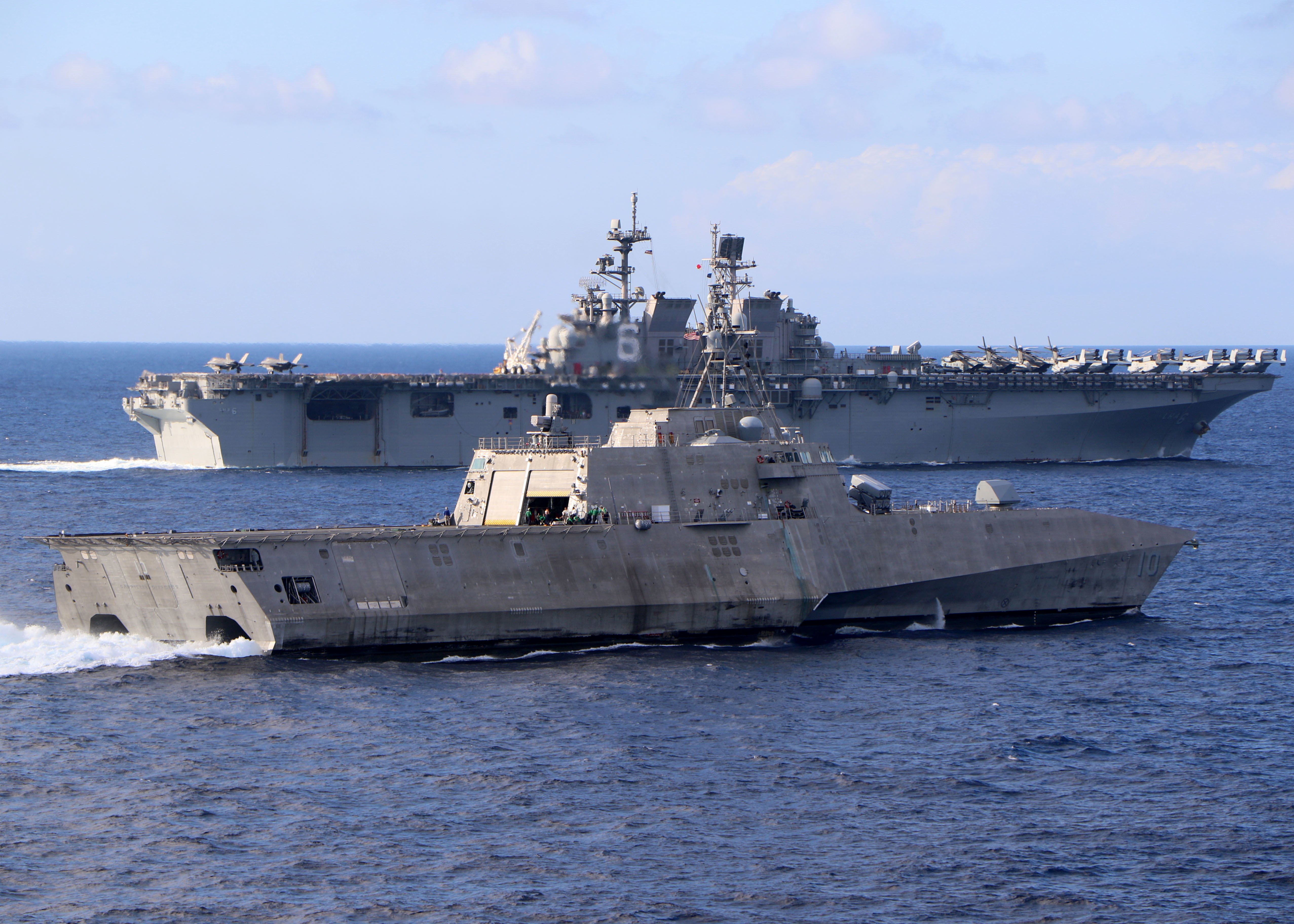
USS Gabrielle Giffords’ (LCS-10) recently completed 17-month deployment to the Pacific will refine how the Navy thinks about operating and maintaining the Littoral Combat Ship forward, the ship’s gold crew captain told USNI News.
Armed with the Navy’s latest anti-ship missile, Giffords deployed from September 2019 until January 2021, making it the second and longest LCS deployment since the Navy put LCS overseas operations on a year-and-a-half pause to work out some programmatic improvements and class-wide overhauls.
Cmdr. Rion Martin, who led one of the two teams that rotated on and off the ship during crew swaps throughout the lengthy deployment, said the sailors and the supporting commands ashore had helped learn some lessons on operating, maintaining and manning the LCS at sea for such a long period of time and that he looked forward to additional lessons learned to continue improving the way the Navy leverages this ship class.
The Independence-variant LCS turned heads almost immediately: in October 2019 it launched its long-range Naval Strike Missile during exercise Pacific Griffin with Singapore, the first time an LCS had used this weapon while operating forward. The next month, Giffords conducted its first of several freedom of navigation operations (FONOPS) in the South China Sea.
“I found that mission package to be exceptionally capable and to be honest with you, a lot of fun,” Martin said of the surface warfare mission package Giffords was outfitted with, which includes the MH-60S Sea Hawk helicopter and MQ-8 Fire Scout unmanned aerial vehicle, a 30mm gun and a rigid hull inflatable boat (RHIB).
Martin, who took command of the crew towards the end of its first of two stints in 7th Fleet – after the NSM shot during Pacific Griffin and after the first South China Sea FONOP – said the operations he oversaw were mostly presence operations, FONOPs and commanding officer’s unit-level training opportunities, where he could select what skills he wanted the crew to sharpen during their time at sea.
“Doing that in 7th fleet, knowing that at the same time you could very quickly shift over to a mission set of finding yourself operating alongside potential adversaries, whether it be known or unknown,” made the work feel relevant and intense, he said.
Having the NSM onboard certainly helped, he added.
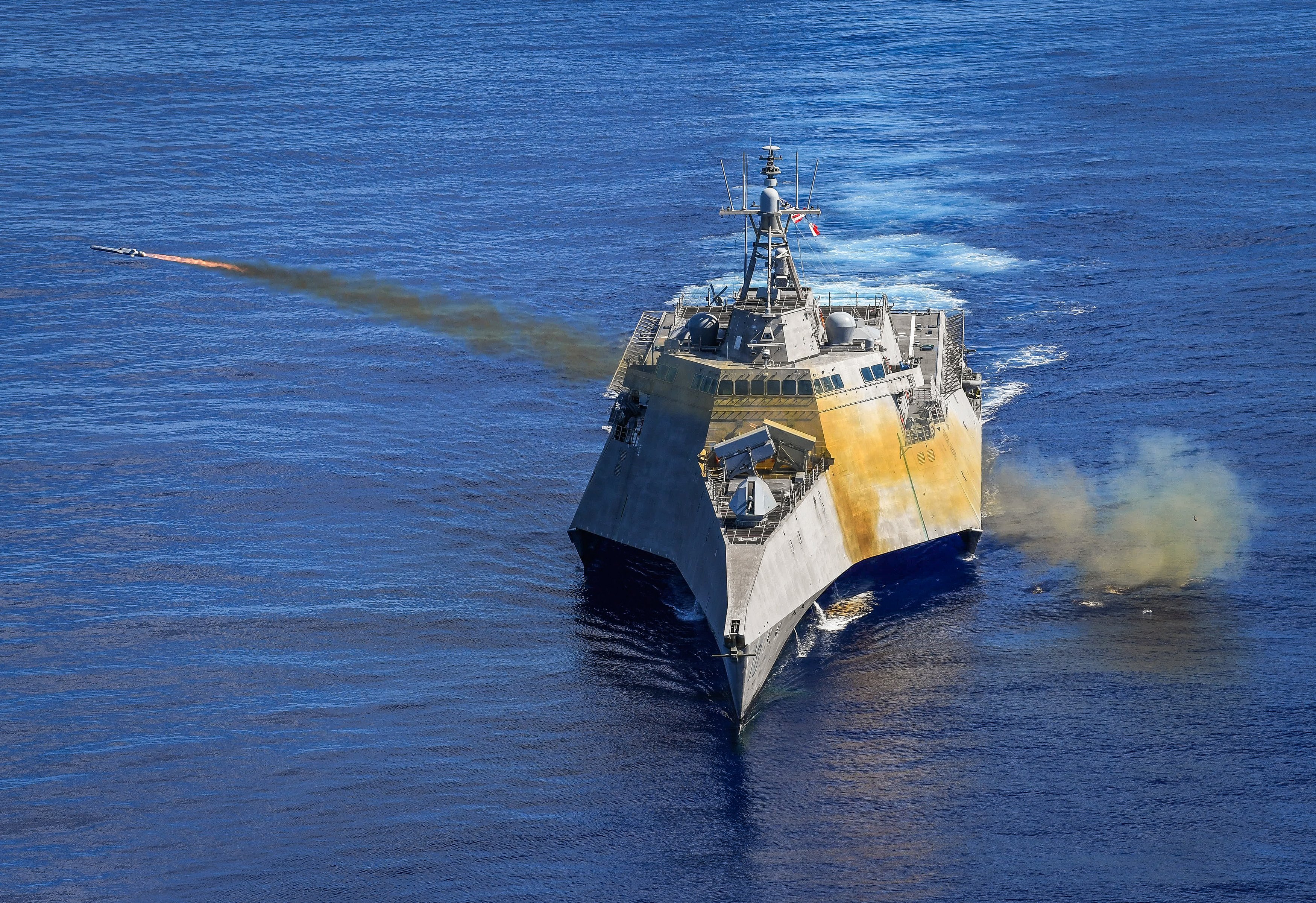
Separate from the mission package is the addition of the Naval Strike Missile, which will go on all LCS hulls as part of an effort to make the ship class more lethal.
Asked what it was like as a ship commander having the long-range missile onboard, Martin said, “it changes your psychology. It changes your confidence. It changes how much you’re willing to get out there, and it lets you know that – I would say an LCS is a bit more like a (National Football League running back) Barry Sanders, or Muhammad Ali, float like a butterfly, sting like a bee, hop and skip and jump around; and that NSM, when you have that NSM, it really gives you a little bit more of a (running back) Jerome Bettis, right, so I can come straight at you and I don’t have to go around that linebacker, I can go through that linebacker. And having that in your psychology is different. And I agree with the statement, it’s a gamechanger and we’re going to continue and improve how we look at that.”
Noting that the crew only shot a live missile once but could rehearse a missile shot scenario through other means during training, Martin added that “I felt confident – my team, when they shot that NSM at Pacific Griffin in 2019 before I was there, the team was always eager to demonstrate that proficiency and say, there’s still some training value in how to show that we can engage this capability with the NSM. And they were really good at it, I was surprised at how proficient the team was even though it had been a while since we had practiced some of that.”
Martin’s gold crew swapped with the blue crew in February 2020, so when Giffords found itself patrolling near a standoff in the South China Sea between China and Malaysia, Martin and his crew were back home in San Diego training. Though he couldn’t speak specifically to the ship’s role in that presence mission to push back against Chinese aggression, Martin’s comments about having greater confidence while carrying NSM onboard could shape how a mission like that was designed and executed.
A Timeline of USS Gabrielle Giffords’ 17-Month Deployment
Gabrielle Giffords recently completed the longest and busiest deployment since the LCS program was overhauled and deployments restarted in 2019. Below is a timeline of events based on information provided by LCS Squadron 1 and from USNI News coverage of the deployment:
- September 2019: USS Gabrielle Giffords (LCS-10) departed its homeport of San Diego, Calif. (Gold Crew).
- October 2019: Gabrielle Giffords launched the Naval Strike Missile during exercise Pacific Griffin, a bilateral exercise with the Republic of Singapore Navy in U.S. 7th Fleet.
- November 2020: Gabrielle Giffords conducted freedom of navigation operations in the South China Sea.
- February 2020: Gabrielle Giffords conducted a crew swap (Gold Crew turned ship over to Blue Crew).
- April 2020: Gabrielle Giffords participated in a bilateral exercise with the Japan Maritime Self-Defense Force (JMSDF).
- May 2020: Gabrielle Giffords conducted presence operations near Panamanian-flagged drill ship West Capella, during a standoff between Malaysian and Chinese forces over exploring natural resources in the region.
- May 2020: Gabrielle Giffords participated in a bilateral exercise with the Republic of Singapore Navy.
- June 2020: Gabrielle Giffords participated in a bilateral exercise with the JMSDF.
- July 2020: Gabrielle Giffords conducted a crew swap (Blue Crew turned ship over to Gold Crew).
- October 2020: Gabrielle Giffords conducted a passing exercise (PASSEX) with El Salvadoran naval counterparts in U.S. 4th Fleet.
- October 2020: Gabrielle Giffords worked with the “Winged Warriors” of 1st Battalion, 228th Aviation Regiment to complete MH-60L Black Hawk flight deck landing qualifications.
- November 2020: Gabrielle Giffords participated in UNITAS, the world’s longest running maritime exercise, which included nine nations and 13 warships.
- December 2020: Gabrielle Giffords interdicted a low-profile vessel carrying 6,300 pounds of cocaine, making it the largest LPV drug interdiction of the year.
- January 2021: Gabrielle Giffords returned to San Diego.
By October, with the gold crew back onboard the LCS, Giffords had left 7th Fleet and was operating in U.S. 3rd Fleet waters, on its way down to U.S. Southern Command to participate in an enhanced effort to combat illicit trafficking in Central America and to participate in the long-running UNITAS exercise.
“While in U.S. 4th Fleet, Gabrielle Giffords partnered with U.S. Navy and international warships, the U.S. Coast Guard, the Drug Enforcement Administration, FBI, and Immigration and Customs Enforcement, as well as other allied partners and international agencies, all of which play a role in counter-narcotics operations in the area,” according to a Navy statement provided to USNI News.
“Along with the embarked U.S. Coast Guard Law Enforcement Detachment 407, Gabrielle Giffords seized an estimated 7,622 kilograms of cocaine and an estimated 4,144 pounds of marijuana. Gabrielle Giffords’ low-profile vessel interdiction of 6,300 pounds of cocaine in December 2020 was the largest low-profile vessel cocaine seizure last year.”
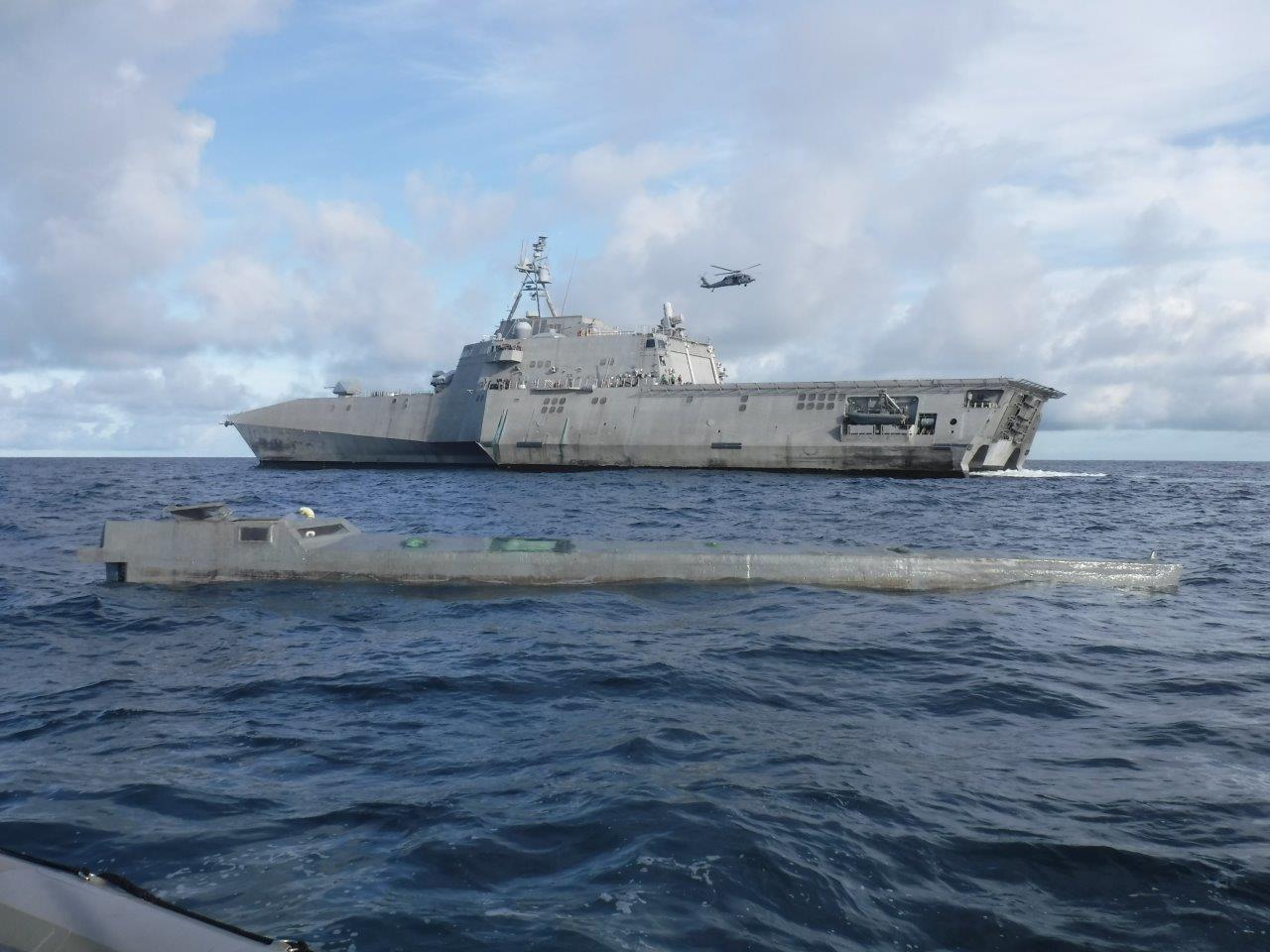
Martin said the 4th Fleet segment of the deployment was less focused on sharpening the ship’s and crew’s lethality and more about expanding the potential it holds for inter-service, inter-agency and international interoperability.
“We were able to work with Winged Warriors for Joint Task Force Bravo, that’s the Army Blackhawks team down there, and they were able to land on the flight deck and that was a lot of fun, the Army Bubbas. There was always a good connection between the Army and Navy aside from the Army-Navy football game, and so connecting with our brothers and sisters there to land them was I think a big step in the right direction for inter-service operability,” he said.
“We had the Marines onboard to assess further interoperability and how we can leverage that massive mission bay of configurable space, and the 11-meter (RHIB) and the ability to launch and recover that 11-meter in a tactically relevant timeline. And then the primary mission set, between having a law enforcement detachment – the FBI, Immigrations and Customs Enforcement and the DEA – a bunch of allied partners, and then again the team of teams down there for the counter-narcotics mission set, counter-illicit-trafficking mission set.”
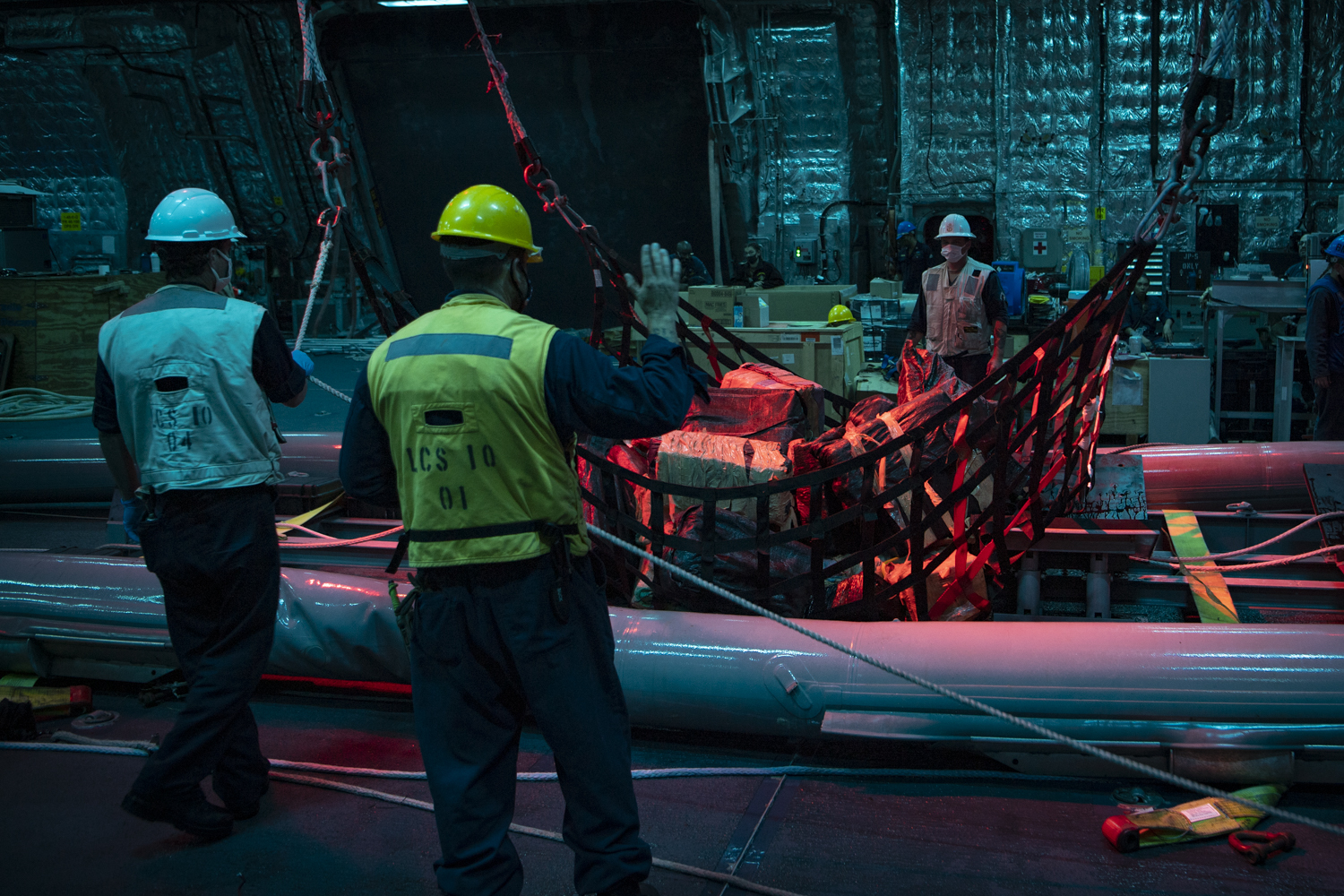
The key to the small boat operations, which were used by the Marines and for counter-drug operations, is the operation of the Twin Boom Extensible Crane (TBEC), which Martin acknowledged had been a previous source of difficulty for the Independence-variant. Whereas the Freedom-variant design can launch small boats right out the back of the ship, the Independence-variant’s trimaran hull design creates too much turbulence behind the ship, requiring a crane system to place a small boat or unmanned vessel into the water behind the turbulence.
“That was a system that, from my perspective, we had yet to really demonstrate high levels of proficiency in the operational use of it.”
Martin praised his crew’s “commitment to safely operating that thing but also constantly putting more weight on the bar, constantly upping the game on what their max capability was, … constantly pushing to say, how can we better improve and stay within the realm of safe operations? And I’ll tell you, operating that TBEC – and I know it had some bad press in the past, and maybe there’s a little bit of eternal optimist coming through here – we must have done 35 or 40 launches and the teams got it down from being able to use that thing as a ready lifeboat or being able to launch that inside 10, 15, 20 minutes depending on sea state and environmentals and what you were doing before or after – it was humbling, it was humbling and inspiring.”
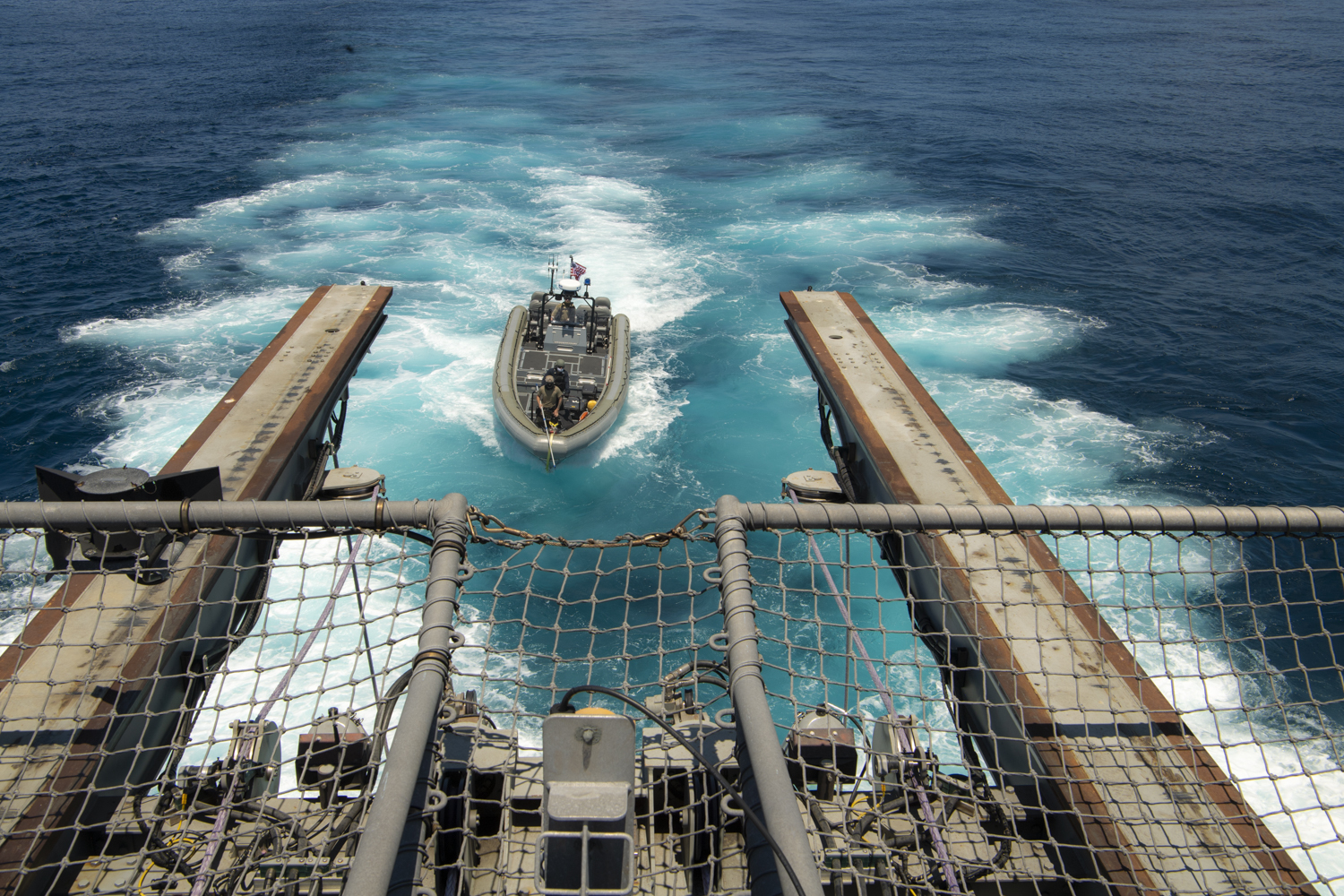
Martin did acknowledge that crane operations are one area where the LCS’s small crew size can be a challenge since it’s a manpower-intensive operation.
“It’s a challenge from a human performance perspective. The sailors are putting out 100 percent and going 100 miles an hour, and when you’re on the field that long you’ve got to take a breather. And that’s where we had to identify some efficiencies to build resilience.”
More broadly on personnel, Martin said the blue/gold crewing construct – which is mostly used on ballistic and guided missile submarines but also on surface ships like the expeditionary sea base, which is meant to stay forward-based and relies on a rotational crew to man it – was largely a success.
When his team returned to 7th Fleet in July to resume operating on Giffords, “this crew was a varsity team. This was their second deployment out there, (they) had already worked together, had already formed together, had already gone through a first season and taken on the challenges.”
He said the time at home in between deployments, when the crew is supposed to rest but also train ashore in the simulator or at sea on the LCS squadron’s training hull, did a lot to create resiliency.
“The efficiency is that we can offer the combatant commanders, the fleet commanders, a ready team of sailors and for a long period of time. You get more return on investment with the hull and then the rotational crews,” he said.
“There were certainly challenges, particularly coming back in a challenging environment with the pandemic, and finding the balance between (training and) building resilience with the sailors and their families and having that time … so that you can get ready, charge your batteries back up and head back out.”
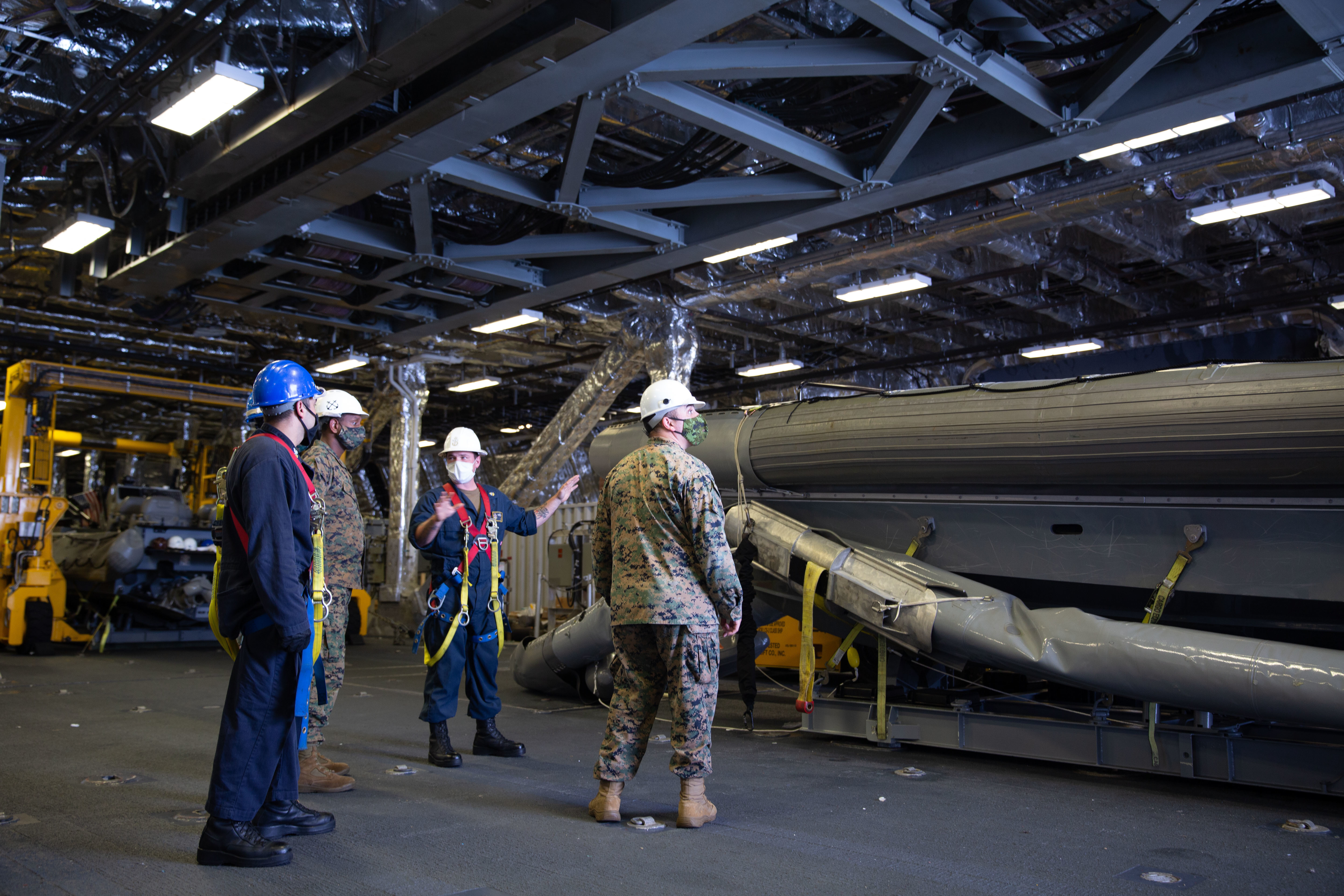
One issue he pointed to with the crew swap model was ownership, and recognizing that another crew might have a different way of taking care of the ship and gear but that ultimately both crews are trying to do right by the ship and the mission – but he acknowledged that all ships with rotational crews deal with this challenge.
Maintenance was of course a big focus during the deployment, with the ship staying out for a year and a half. Martin said the “team of teams” supporting the deployment – Naval Surface Force Pacific, Destroyer Squadron 7, Logistics Group Western Pacific, 4th Fleet and more in the Navy, as well as the industry team supporting them – were helpful in making sure the crew had what they needed to keep the ship ready but also to grow more self-sufficient ahead of future LCS deployments forward.
“The propulsion plant and auxiliaries obviously had its differences than other plants on any other class of ship. So as we lived through those experiences, we learned the failure rate of parts, we learned the right frequency to revisit maintenance, whether it be preventive or otherwise,” Martin said.
“In my opinion we’re focused on the right aspect of continuing to improve the reliability and the maintenance of this equipment.”
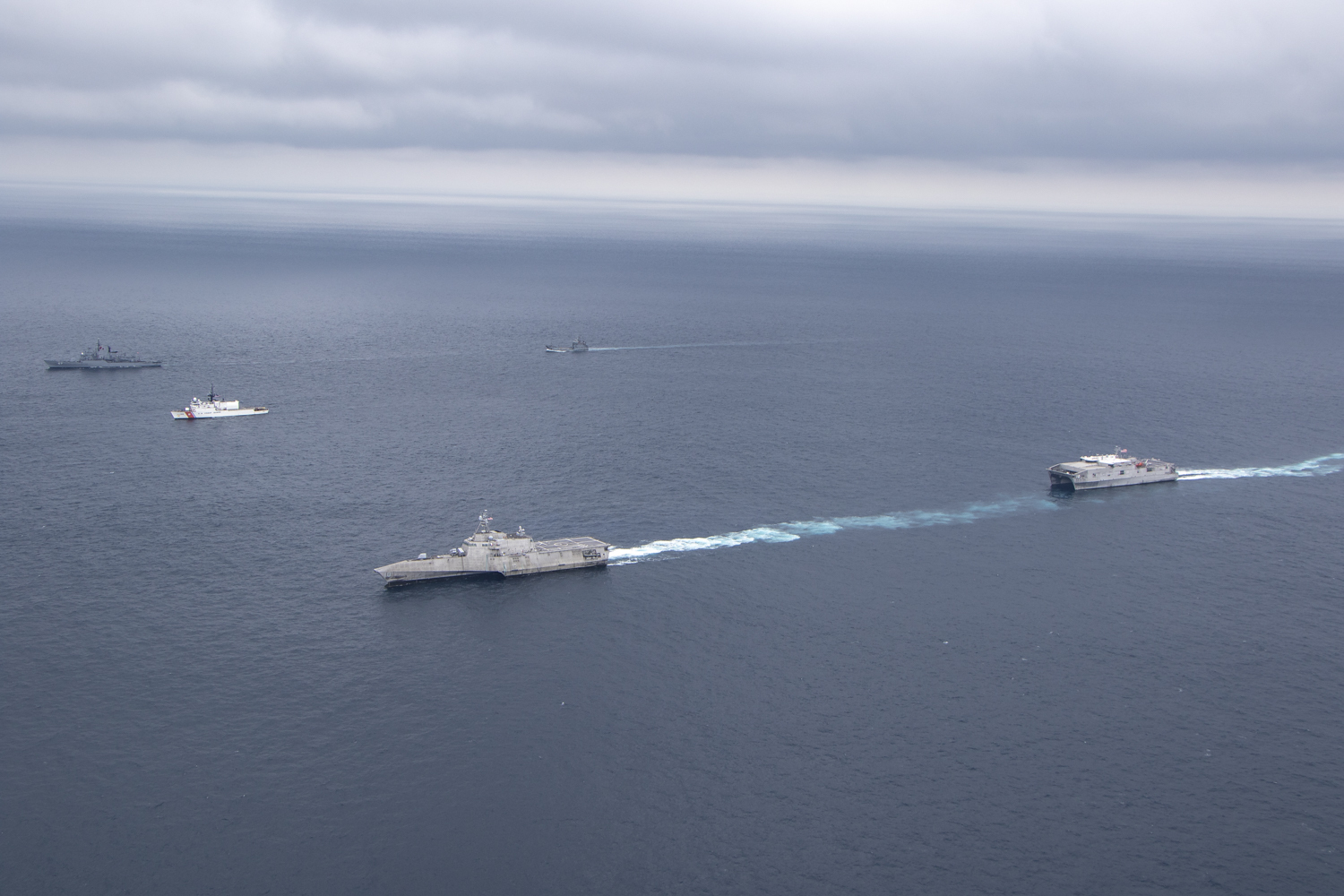
While in 7th Fleet, the ship was supported out of the Navy/industry team in Singapore. In 4th Fleet, the team was supported by a Maintenance Execution Team (MET) aboard expeditionary fast transport USNS Burlington (T-EPF-10).
Martin said it took some time to understand what the MET sailors brought in terms of their individual skillsets and what tools and materials they had at their disposal on the EPF to conduct maintenance, but “there were definitely lessons learned that I am extremely confident are going to pay dividends for sailors helping sailors at sea, with the MET.”





